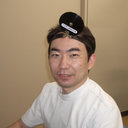Cystatin SN upregulation in patients with seasonal allergic rhinitis.
Schlüsselwörter
Abstrakt
Seasonal allergic rhinitis (SAR) to the Japanese cedar, Cryptomeria japonica (JC) pollen is an IgE-mediated type I allergy affecting nasal mucosa. However, the molecular events underlying its development remain unclear. We sought to identify SAR-associated altered gene expression in nasal epithelial cells during natural exposure to JC pollen. We recruited study participants in 2009 and 2010 and collected nasal epithelial cells between February and April, which is the period of natural pollen dispersion. Fifteen patients with SAR-JC and 13 control subjects were enrolled in 2009, and 17 SAR-JC patients, 13 sensitized asymptomatic subjects (Sensitized), and 15 control subjects were enrolled in 2010. Total RNA was extracted from nasal epithelial cells and 8 SAR-JC patients and 6 control subjects in 2009 were subjected to microarray analysis with the Illumina HumanRef-8 Expression BeadChip platform. Allergen-stimulated histamine release was examined in the peripheral blood basophils isolated from patients with SAR. We identified 32 genes with significantly altered expression during allergen exposure. One of these, CST1 encodes the cysteine protease inhibitor, cystatin SN. CST1 expression in nasal epithelial cells was significantly upregulated in both the 2009 and 2010 SAR-JC groups compared with the control groups. Immunohistochemical staining confirmed the increased expression of CST1 in the nasal epithelial cells of SAR patients. Addition of exogenous CST1 to basophils inhibited JC allergen-stimulated histamine release in vitro. We propose that CST1 may contribute to inactivation of protease allergens and help re-establish homeostasis of the nasal membranes.


